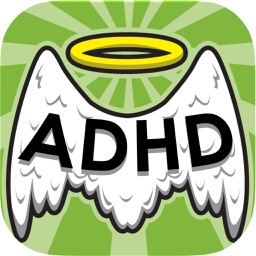ADHD vs. Autism: Key Differences, Diagnosis, and Treatment Options

Attention Deficit Hyperactivity Disorder (ADHD) and Autism Spectrum Disorder (ASD) are both neurodevelopmental disorders that can impact various aspects of an individual's life. Despite some overlapping characteristics, they are distinct conditions with unique symptoms, diagnostic criteria, and treatment approaches. Understanding the key differences between ADHD and Autism is crucial for accurate diagnosis and effective intervention.
Key Differences Between ADHD and Autism
Core Symptoms
ADHD: ADHD is characterized primarily by symptoms of inattention, hyperactivity, and impulsivity. Individuals with ADHD may struggle with sustaining attention, following through on tasks, and staying organized. They might also display excessive fidgeting, restlessness, and difficulty remaining seated or waiting their turn.
Autism: Autism Spectrum Disorder is marked by challenges in social communication and repetitive behaviors. Core symptoms include difficulties with social interaction, limited eye contact, and challenges in understanding social cues. Additionally, individuals with Autism may exhibit restricted, repetitive patterns of behavior, interests, or activities, such as repetitive hand movements or an intense focus on specific topics.
Social Interaction
ADHD: Individuals with ADHD might have trouble with social interactions due to impulsivity or inattentiveness. However, their social difficulties are usually related to their inattention or hyperactivity rather than a fundamental misunderstanding of social norms.
Autism: In contrast, those with Autism often face more profound challenges in social communication. They may struggle to interpret verbal and nonverbal cues, leading to difficulties in forming and maintaining relationships. Social interaction deficits are a central feature of Autism.
Communication Skills
ADHD: Communication in ADHD can be affected by impulsivity or distractibility. People with ADHD might interrupt conversations or have difficulty staying on topic, but their language development is generally typical.
Autism: Communication difficulties in Autism can be more pronounced and may include delayed language development or atypical speech patterns. Some individuals with Autism may have nonverbal communication challenges, such as limited use of gestures or difficulty understanding tone of voice.
Diagnosis: Identifying ADHD vs. Autism
Diagnostic Criteria
Diagnosis of ADHD and autism is based on the criteria outlined in the Diagnostic and Statistical Manual of Mental Disorders (DSM-5). Symptoms must be present for at least six months and cause significant impairment in at least two settings (e.g., home, school). The criteria for ADHD include inattention, hyperactivity, and impulsivity.
Autism: Autism is diagnosed using DSM-5 criteria, which require persistent deficits in social communication and interaction across multiple contexts, along with restricted, repetitive patterns of behavior, interests, or activities. Symptoms must be evident from early developmental periods and cause significant impairment in functioning.
Assessment Tools
ADHD: Diagnosis typically involves clinical evaluation, including parent and teacher reports, and may use standardized rating scales, such as the Conners Rating Scale or the Vanderbilt Assessment Scales. Observations of behavior and attention are also critical.
Autism: Assessment for Autism involves a comprehensive evaluation that includes developmental history, observations of behavior, and standardized tools such as the Autism Diagnostic Observation Schedule (ADOS) and the Autism Diagnostic Interview-Revised (ADI-R). Evaluations may also include assessments by specialists in developmental disorders.
Treatment Options: Managing ADHD and Autism
ADHD Treatment
Behavioral Interventions: Behavioral therapy, including cognitive-behavioral therapy (CBT), can help individuals with ADHD develop organizational and coping skills. Parent training and classroom management strategies are also beneficial.
Medications: Stimulant medications, such as methylphenidate (Ritalin) and amphetamines (Adderall), are commonly prescribed for ADHD. Non-stimulant medications like atomoxetine (Strattera) may also be used, particularly if stimulants are not effective or cause significant side effects.
Educational Support: Accommodations in educational settings, such as extended time on tests, organizational aids, and tailored instruction, can support students with ADHD in their academic pursuits.
Autism Treatment
Behavioral Therapy: Applied Behavior Analysis (ABA) is a widely used therapy for Autism that focuses on improving specific behaviors and skills through reinforcement strategies. ABA can be tailored to address individual needs and goals.
Speech and Language Therapy: For individuals with communication difficulties, speech and language therapy can help improve verbal and nonverbal communication skills, social skills, and daily living skills.
Occupational Therapy: Occupational therapy can assist individuals with Autism in developing fine motor skills, sensory processing, and adaptive behaviors to improve daily functioning and independence.
Social Skills Training: Programs designed to enhance social understanding and interaction skills are beneficial for individuals with Autism. These may include structured social groups or individualized coaching.
Co-occurrence and Differentiation
Overlapping Symptoms
While ADHD and Autism are distinct, some symptoms can overlap. For example, difficulties with attention and impulsivity can be present in both conditions. This overlap can sometimes complicate diagnosis and treatment planning.
Co-occurrence
It's also possible for an individual to have both ADHD and Autism. In such cases, a comprehensive approach that addresses the needs of both conditions is essential. Accurate diagnosis and tailored interventions can help manage the complexities of co-occurring disorders.
Conclusion
ADHD and Autism are complex conditions with unique characteristics, diagnostic criteria, and treatment strategies. Recognizing the differences between these disorders is crucial for effective diagnosis and intervention. While both ADHD and Autism present challenges, understanding their distinct features allows for targeted and supportive treatment, enhancing the quality of life for affected individuals and their families. Early and accurate diagnosis, combined with appropriate interventions, can make a significant difference in managing these conditions and fostering positive outcomes.
- Industry
- Art
- Causes
- Crafts
- Dance
- Drinks
- Film
- Fitness
- Food
- Juegos
- Gardening
- Health
- Home
- Literature
- Music
- Networking
- Other
- Party
- Religion
- Shopping
- Sports
- Theater
- Wellness
- News


